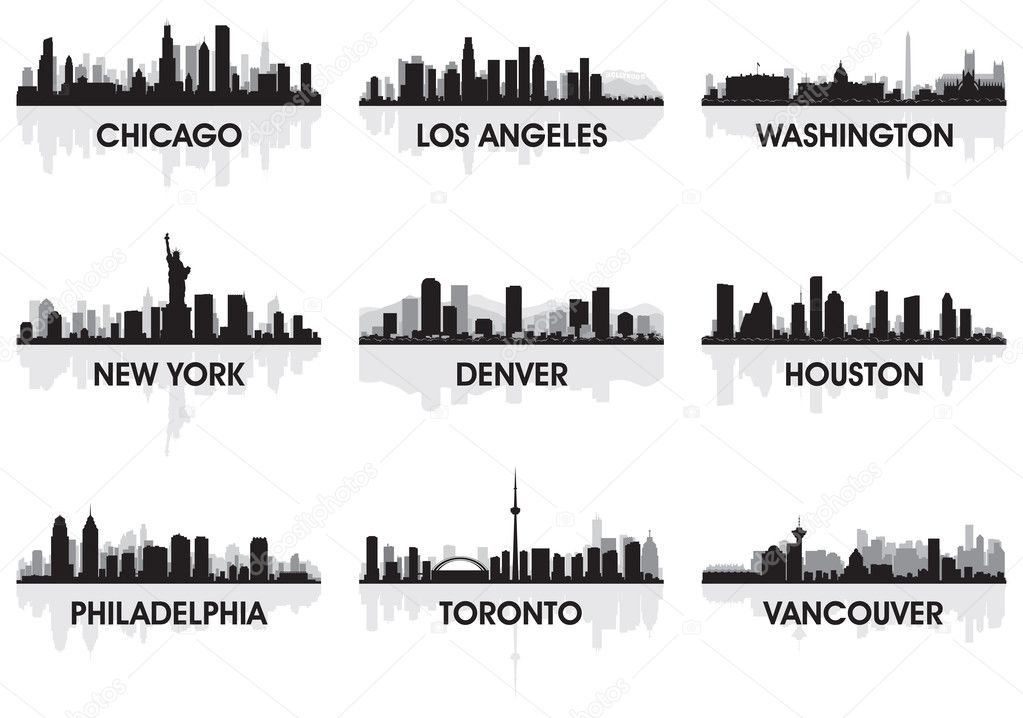Vancouver Geography Pt. 2: City Heights
Other major cities are tall, how does Vancouver stack up?
Vancouver, despite being one of the larger cities in North America, does not hold the same pedigree for towers that major cities such as Toronto, Chicago, or Los Angeles. The average height of Toronto's 5 tallest buildings (CN Tower excluded as it is considered a structure, not building) is 885.6 feet, Chicago tallest buildings average 1,222 feet, and Los Angeles averages 822 feet. The average height of Vancouver's 5 tallest towers, with the Living Shangri-la standing the tallest at 659 feet, averages a measly 527.6 feet. New York City, which actually has much in common with Vancouver geographically, boasts an impressive 1263.6 average. So why does a world class city like Vancouver fail to reach the heights of other major cities?
 |
| Skylines of New York City (above) and Vancouver |
Using New York City as a comparison, as both Vancouver and New York came into existence and thrived due to being successful trading ports. If not for the Harlem River, Manhattan would be a peninsula, just as Vancouver is, and more specifically Vancouver's downtown core is located on an even smaller one. The similarities continue between Downtown Vancouver and New York's Manhattan, both have large urban parks, with Vancouver's Stanley Park slightly edging Central Park for the recognition as North America's largest urban park. Both use a similar grid system to formulate the city streets, and due to the restricted amount of space (from the surrounding waters) the land has been used up and buildings are now getting taller to accomodate swelling populations. The disparity between the cities for building height however is vast. Yes, we can attribute a large amount to the fact that New York is a financial juggernaut and can afford the luxuries such as 100 storey office towers, but it seems like Vancouver could afford to head in that direction.
 |
| Graphic showing height comparisons between Toronto, Vancouver and New York City (Vancouver could fit well within the Manhattan graphic) |
A significant difference between New York City and Vancouver, which is connected to the building height discrepancy, is the nature surrounding Vancouver. Unlike New York, Vancouver has an abundance of natural beauty surrounding it, and it is in the by-laws of the city to protect the views. The by-laws have been around for decades and the urban planning technique dubbed "Vancouverism" was designed to allow residents to keep in touch with the landscape. Developing a city for urban living requires plenty of connection to green spaces, as the concrete lifestyle can dampen the spirit after a period of time. Vancouver embraces itself as a city of nature and has refused to succumb to the pressures of building taller to indicate wealth and power. New York City on the other hand has an image that portrays power, a concrete jungle where one may lose themselves amongst streets filled with massive skyscrapers. These tall markers along the city skyline represent the "power broker", expensive architectural wonders, filled with commercial uses and expensive residences. To add or own a piece of the skyline are the dreams of many and one is allowed to dream big in New York while Vancouver it is a struggle to evolve the skyline. Height restrictions on buildings have long been fought by local architects who envision new unique pieces sprouting out of the Vancouver downtown core; however the city has stood strong to protect views of the local mountains as a backdrop to the city. In New York City, feeling insignificant to the pillars that are the giant skyscrapers, that is the attraction; for Vancouver the connection to nature and the views are a part of the experience.
While residents still are in favour to preserve the mountain views, there has been significant pressure the last few years to begin to create exceptions to the rules. Many are hoping to allow for irregularities, to mimic the mountains varying heights, but so far many see that as potentially losing the natural backdrop and more specifically the city's "view corridors". There has been a recent upswing in construction proposals for new residential and office towers, with the newly announced Trump Towers slated to become the second tallest tower in Vancouver. Time will tell if Vancouverites can resist the evolution of the city enough to preserve what many have fought for over the past 20-plus years.
In part 3, we will take a look at the view corridors many in Vancouver wish to preserve.
Leave a comment! Do you wish Vancouver would grow similar to that of New York? Does it make sense economically? Or do you prefer the current laws preserving the views of nature?
 |
| Vancouver (2007) skyline with mountain backdrop |
In part 3, we will take a look at the view corridors many in Vancouver wish to preserve.
Leave a comment! Do you wish Vancouver would grow similar to that of New York? Does it make sense economically? Or do you prefer the current laws preserving the views of nature?

No comments:
Post a Comment